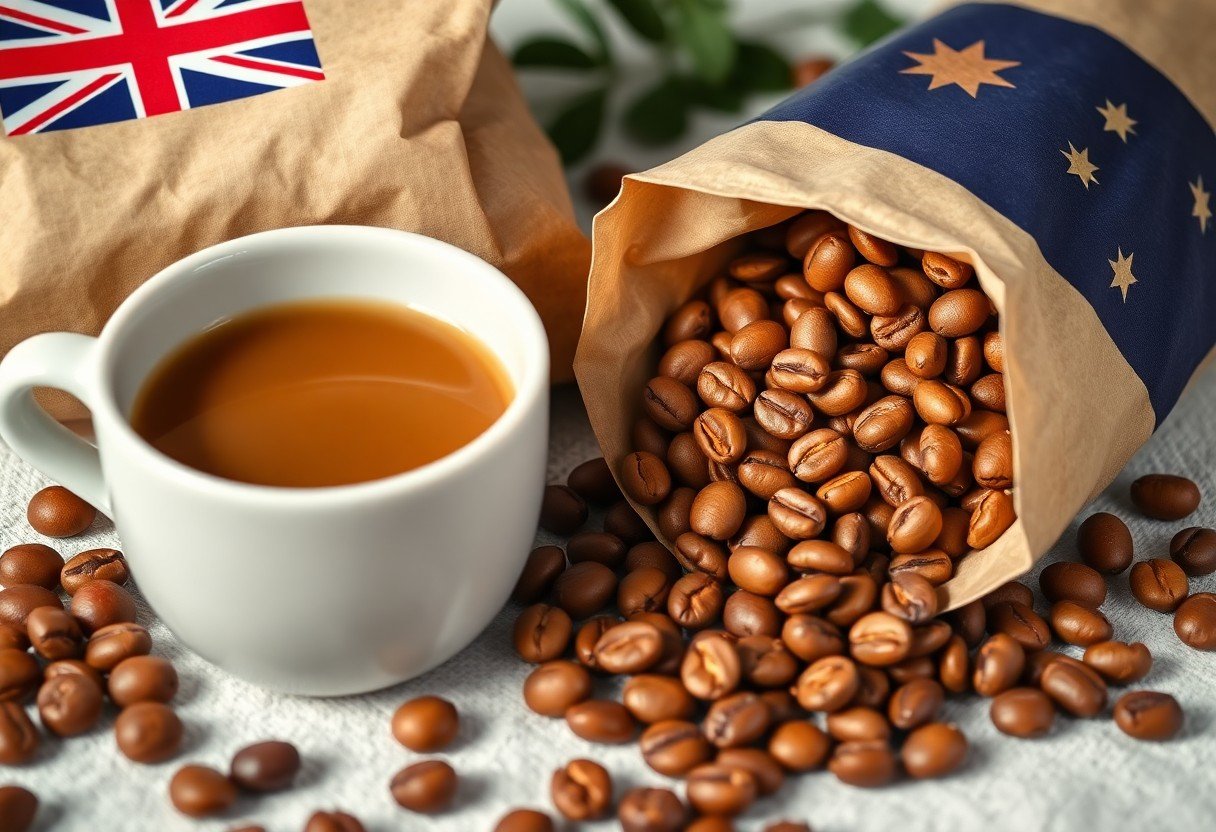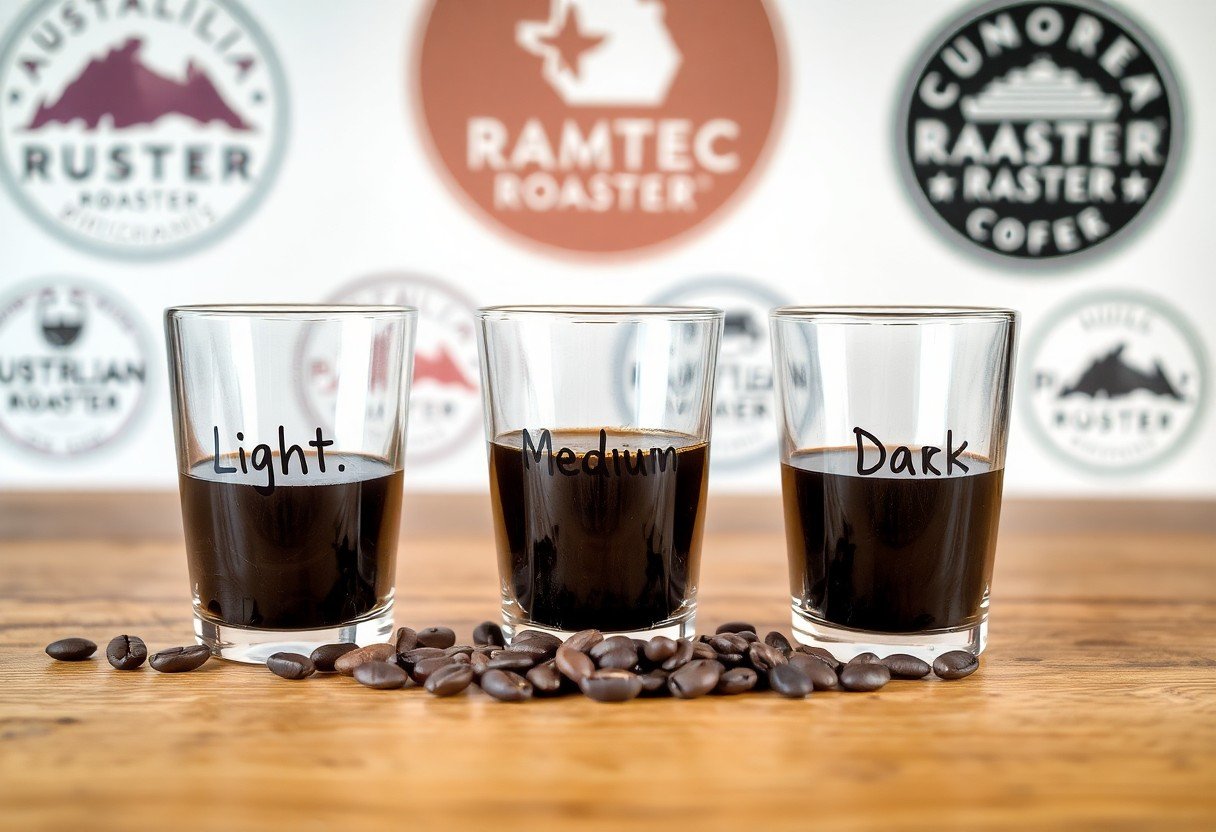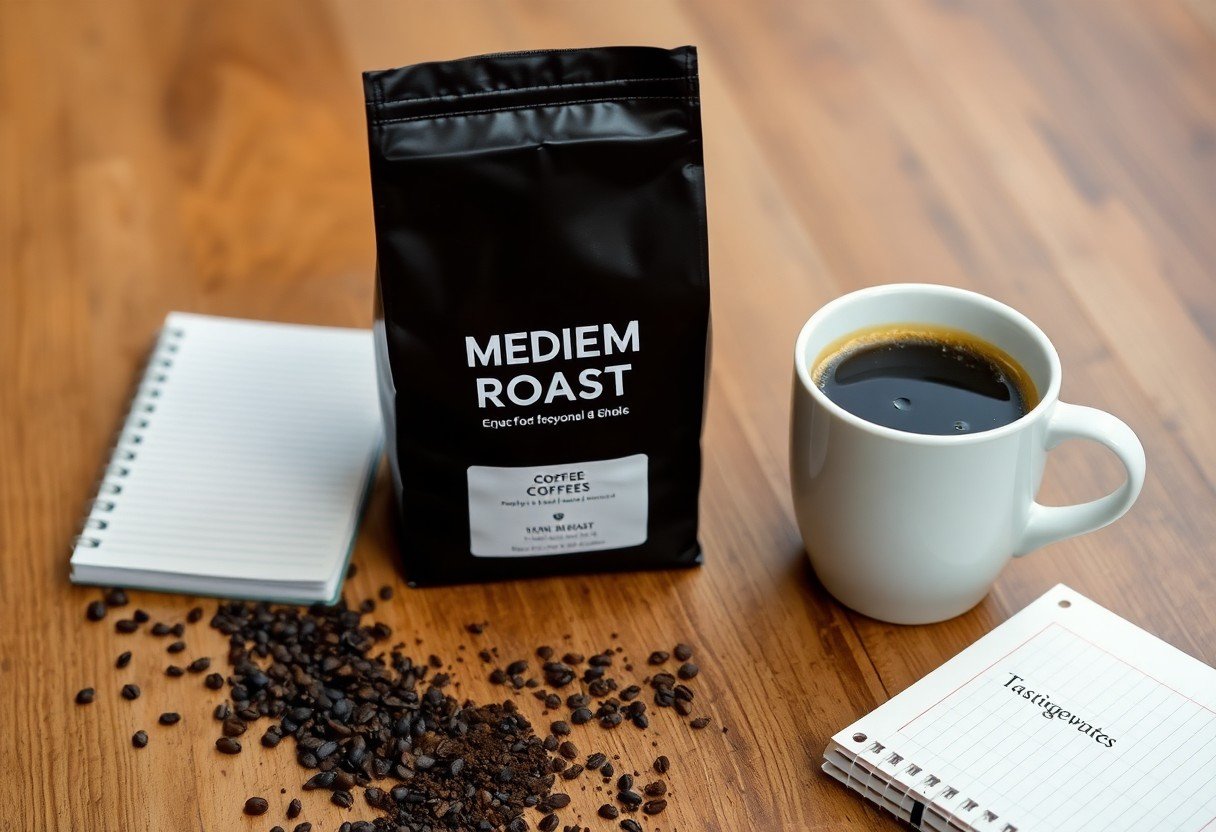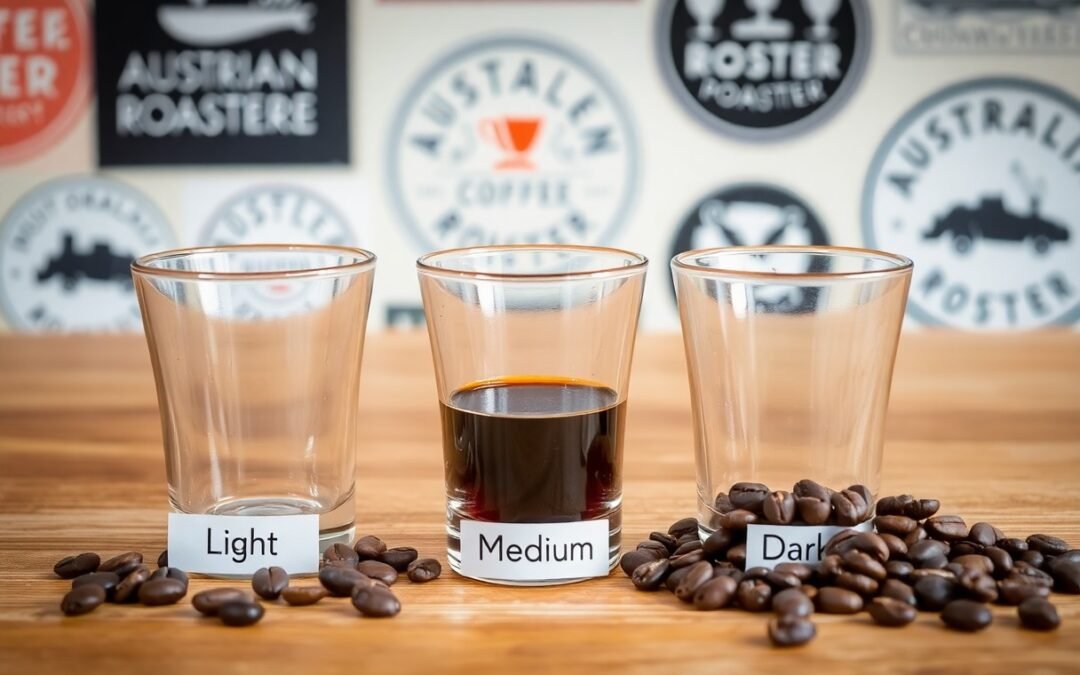Just as you explore the nuances of your favorite brew, understanding coffee roasts can elevate your coffee experience. From light to dark, each roast profile offers distinct flavors and aromas that reflect the beans’ origin and roasting process. This guide will help you navigate the spectrum of Australian roasters, enhancing your appreciation for the craft. For an in-depth look, check out The deep, dark rabbit hole of roast profiles.
The Art of Roasting: What Happens in the Bean
The Chemistry of Coffee: Maillard Reaction and Caramelization
The transformation of green coffee beans into the aromatic, flavorful coffee you enjoy involves complex chemical reactions, primarily the Maillard reaction and caramelization. The Maillard reaction occurs at temperatures between 300°F to 400°F (150°C to 200°C), where reducing sugars and amino acids combine to form an array of flavor compounds and browning colors. This reaction is responsible for the rich flavors associated with darker roasts, enhancing depth and complexity.
Caramelization, on the other hand, takes place at higher temperatures, typically above 320°F (160°C). During this process, sugars decompose, leading to a range of sweet flavors and darker tones. Both reactions contribute to the roast profile, affecting acidity, sweetness, and body in your coffee. Observing the balance between these reactions can help you fine-tune your roasting process for optimal flavor development.
Influence of Time and Temperature on Roast Profiles
Time and temperature play pivotal roles in determining the final roast profile of coffee beans. During the roast, the temperature increases steadily, and you control the duration of the roast to achieve your desired light, medium, or dark profile. Each second can alter the chemical dynamics, changing flavor notes, aroma, and body. Typically, lighter roasts range from 350°F to 400°F (175°C to 205°C) and are completed in under 10 minutes, allowing for bright acidity and floral notes to shine through.
In contrast, dark roasts usually reach temperatures above 450°F (232°C) and require longer roasting times. This leads to a heavier body and lower acidity, while introducing bittersweet notes. As you experiment with different time-temperature combinations, pay attention to how these factors modify your coffee’s final taste, as slight variations can lead to significantly different outcomes.
Influence of Time and Temperature on Roast Profiles
| Roast Profile | Temperature Range (°F) |
|---|---|
| Light Roast | 350°F to 400°F |
| Medium Roast | 410°F to 430°F |
| Dark Roast | 450°F and above |
Finding the right balance of time and temperature fosters distinct roast profiles that cater to your taste preferences. Lighter roasts tend to preserve the beans’ inherent acidity and sweetness, appealing to those who enjoy bright, vibrant flavors. Medium roasts strike a balance, offering complexity while still preserving some of the original characteristics of the beans. Dark roasts, conversely, bring forward deeper, bolder flavors, ideal for those who prefer a heavier body and more pronounced bitterness. Experimentation in this realm not only enhances your understanding but also allows you to craft coffee that truly resonates with your palate.
Time and Temperature Effects
| Roast Characteristic | Effect of Time and Temperature |
|---|---|
| Flavor Complexity | Shorter roasts emphasize brightness; longer roasts deepen complexity. |
| Acidity Level | Higher acidity in lighter roasts; lower acidity in darker roasts. |
| Aroma | Aromatic compounds develop more with optimal roasting time and temperature. |

Decoding Light Roasts: Flavor Highlights and Characteristics
The Distinctive Notes: Brightness and Acidity
Light roasts are celebrated for their vibrant and lively flavor profiles. You’ll often encounter pronounced acidity, which can manifest as a crispness on the palate reminiscent of citrus or green apple. This brightness is a hallmark that enhances the complexity of the coffee, allowing you to experience the underlying fruit tones and floral hints more prominently than in darker roasts. Varietals such as Ethiopian Yirgacheffe or Kenyan AA are excellent examples where these bright notes shine, showcasing a range of flavors from lemon zest to jasmine.
The nuanced acidity in light roasts not only adds to the overall taste experience but also balances the sweetness that naturally occurs from the coffee cherries’ ripeness. These coffees tend to have a lighter body, allowing those refreshing flavors to take center stage, encouraging you to explore multiple sips to grasp the full spectrum of their characteristics. Whether enjoying them straight or in a pour-over, you’ll appreciate how the acidity dances on your taste buds, distinctly setting light roasts apart.
Ideal Brewing Methods for Light Roasts
Brewing light roasts requires specific techniques to accentuate their delicate flavors. Methods like pour-over or Aeropress are ideal, as they allow for precise control over variables like water temperature and extraction time. Using water that’s slightly cooler, around 195°F to 205°F, helps preserve those vibrant notes without over-extracting. A medium grind size is often recommended, enabling optimal flow and extraction of the coffee oils and acids that make light roasts shine.
To extract the best flavors from your light roast, consider steeping it for a shorter duration—around three to four minutes—with the pour-over method, adjusting based on the grind size or how pronounced you want the flavors. Experimenting with the coffee-to-water ratio can also enhance your experience; a common starting point is 1:15, adjusting as per your taste preference. Finding the right balance will allow you to appreciate the intricate flavors that light roasts offer and elevate your coffee brewing to new heights.

The Nuances of Medium Roasts: Striking a Balance
Taste Profiles: Complexity and Depth
Medium roasts provide a beautiful balance between acidity and sweetness, resulting in a flavor profile that can range from fruity to nutty. You may find hints of caramel, chocolate, and even delicate floral notes. The roasting process unlocks complex flavor compounds without overwhelming the natural characteristics of the beans, allowing you to experience a harmonious blend that unfolds with each sip. This complexity often mirrors the nuances of the regions where the beans are sourced, giving you a distinct taste of their origin.
The body of medium roasts tends to be smoother than that of lighter roasts, with a well-rounded mouthfeel that invites you to savor each cup. The acidity feels lively but not sharp, often resulting in a bright yet mellow experience. This category appeals to many coffee drinkers seeking depth without the bitterness sometimes associated with darker roasts, providing a perfect middle ground that caters to a wide range of palates.
Popular Medium Roast Varieties from Australian Roasters
Australia boasts a rich coffee culture, with roasters offering diverse medium roast varieties that showcase local and international beans. For instance, varieties like the Yirgacheffe from Ethiopia and the Colombian Supremo are frequently celebrated for their balanced profiles. These roasters often highlight single-origin beans, ensuring that the unique characteristics of each batch shine through. Australian brands like Toby’s Estate and Five Senses Coffee are known for their innovative blends and exceptional sourcing practices.
Lightly roasted Colombian beans can present bright citrus notes alongside a sweet caramel finish, while Ethiopian Yirgacheffe may surprise you with floral undertones interspersed with fruit. Roasters often experiment with blends, melding beans from different regions to craft a signature profile that excites the palate. This variety not only showcases the ingenuity of Australian roasters but also provides you with an opportunity to explore an array of flavor and aroma combinations that deepen your appreciation for medium roasts.
Dark Roasts: A Journey into Boldness
The Robust Flavor Profile and Its Appeal
Dark roasts deliver a striking flavor profile marked by deep, bold notes that often include chocolate, caramel, and a smoky intensity. This richness stems from a longer roasting time, during which the beans undergo significant chemical changes that enhance their sugars and oils. What you experience in a dark roast is not just bitterness; it’s a complex harmony designed to linger on your palate. Many coffee enthusiasts find comfort in these bold flavors, as they offer a sense of warmth and familiarity, making dark roasts particularly appealing during cooler seasons or as a hearty pick-me-up.
The allure of dark roasts extends beyond flavor; they often have a thicker body and lower acidity compared to lighter roasts. This can make dark coffee more forgiving for those who may find bright or acidic profiles less enjoyable. Additionally, some dark roasts carry unique regional characteristics, allowing you to explore the specific nuances of various coffee-producing regions, such as the earthy undertones of Sumatran coffees or the bold sweetness of Brazilian beans.
Best Practices for Brewing Dark Roasts
Brewing dark roasts requires attention to detail to fully capture their potential. Opt for a slightly coarser grind than you might use for medium or light roasts, as this helps to balance extraction and prevent over-extraction, which can heighten bitterness. Using filtered water at around 200°F (93°C) will ensure you do not scorch the delicate oils, preserving the rich flavor profile. The recommended brew time can vary, so experimenting with immersion or drip methods can unlock the complexities hidden within your dark blend.
Paying attention to dose ratio is equally vital; a good starting point is to use about 1:16 coffee to water for brewing. Keep in mind that brewing time should be adjusted based on your method and taste preferences. Tasting your coffee as it brews can help you hone in on the perfect balance between strength and bitterness, ensuring your cup of dark roast delivers the bold experience you’re looking for.

A Taste of Australia: Leading Roasters and Their Unique Contributions
Spotlight on Renowned Australian Coffee Roasters
Australia’s coffee scene is vibrant, boasting roasters who elevate the craft with unique beans and distinct roasting techniques. For instance, Square One Coffee has carved a niche with their meticulous selection of single-origin coffee, particularly from regions like Ethiopia and Colombia. Their roasting process reveals a dynamic range of flavors, allowing you to appreciate the inherent qualities of each coffee origin. Another standout is Allpress Espresso, which has garnered a loyal following by blending premium beans to create a robust yet balanced cup that speaks to both local and international palettes.
These roasters not only focus on quality but also embrace sustainability. They build direct relationships with farmers to ensure ethical sourcing and contribute to community development. By choosing these brands, you support a movement that values both exceptional taste and responsible practices, deepening your coffee journey while savoring a cup that connects you to its origins.
Specialty Blends That Showcase Roast Profiles
Specialty coffee blends are where creativity meets expertise, merging various roast profiles to create a harmonious drinking experience. You may find a blend that combines the fruity brightness of a light roast with the chocolate undertones of a medium roast, delivering a multi-layered flavor profile that excites your palate. Roasters like Proud Mary specialize in these unique blends, offering you a sensory adventure with every sip.
In your quest for the perfect cup, exploring these specialty blends is imperative. You might encounter offerings such as the “Morning Blend,” which artfully balances light and medium roasts to foster a refreshing yet comforting flavor. Engaging with these blends offers a unique opportunity to explore how different roasting levels intersect, showcasing the artistry that Australian roasters pour into their craft.
Specialty blends can also spotlight specific regions or farming techniques, allowing you to taste not just a coffee but a story. For instance, a blend featuring beans from both Brazil and Kenya may offer the nutty sweetness characteristic of Brazilian coffee alongside the vibrant acidity of Kenyan beans. This exploration deepens your appreciation for the nuances in each roast while connecting you with the broader narrative of coffee production in Australia and around the world.
Conclusion
With this in mind, understanding the different coffee roast profiles—light, medium, and dark—equips you with the knowledge to make informed choices about your coffee consumption. By exploring the unique flavors and characteristics of Australian roasters, you gain insight into how factors such as origin, processing methods, and roasting techniques influence the final cup. Each roast level offers distinct taste experiences that can enhance your appreciation of coffee as a whole.
Ultimately, your preference between these profiles can guide you to discover new favorites that suit your palate. Engaging with various roasters and their offerings allows you to expand your coffee horizons, making each cup a chance to savor the artistry and dedication behind Australian coffee roasting. Embrace the journey of exploration, and let your taste buds lead the way.
FAQ
Q: What are the defining characteristics of light roast coffee?
A: Light roast coffee is known for its bright acidity, pronounced fruit flavors, and higher caffeine content compared to darker roasts. It typically features a light brown color and no oil on the surface of the beans.
Q: How does medium roast coffee differ from light and dark roasts?
A: Medium roast coffee strikes a balance between acidity and body, offering a richer flavor profile with a medium brown color. It often combines the bright notes of light roasts with some of the deeper, chocolatey undertones found in dark roasts.
Q: What flavors are commonly found in dark roast coffee?
A: Dark roast coffee tends to have a bold, rich flavor with notes of chocolate, caramel, and a pronounced smokiness. The beans are dark brown to almost black and often have an oily surface due to the extended roasting process.
Q: How do Australian roasters approach coffee roasting profiles?
A: Australian roasters typically emphasize the unique flavors of the coffee beans, tailoring their roasting profiles to highlight specific regional characteristics. They often experiment with different methods to achieve a nuanced flavor experience.
Q: Can the roast level affect the brewing method for coffee?
A: Yes, the roast level can influence the ideal brewing method. Light roasts are often brewed using pour-over or Chemex methods to accentuate their brightness, while dark roasts are frequently used in espresso due to their bold flavors and fuller body.

